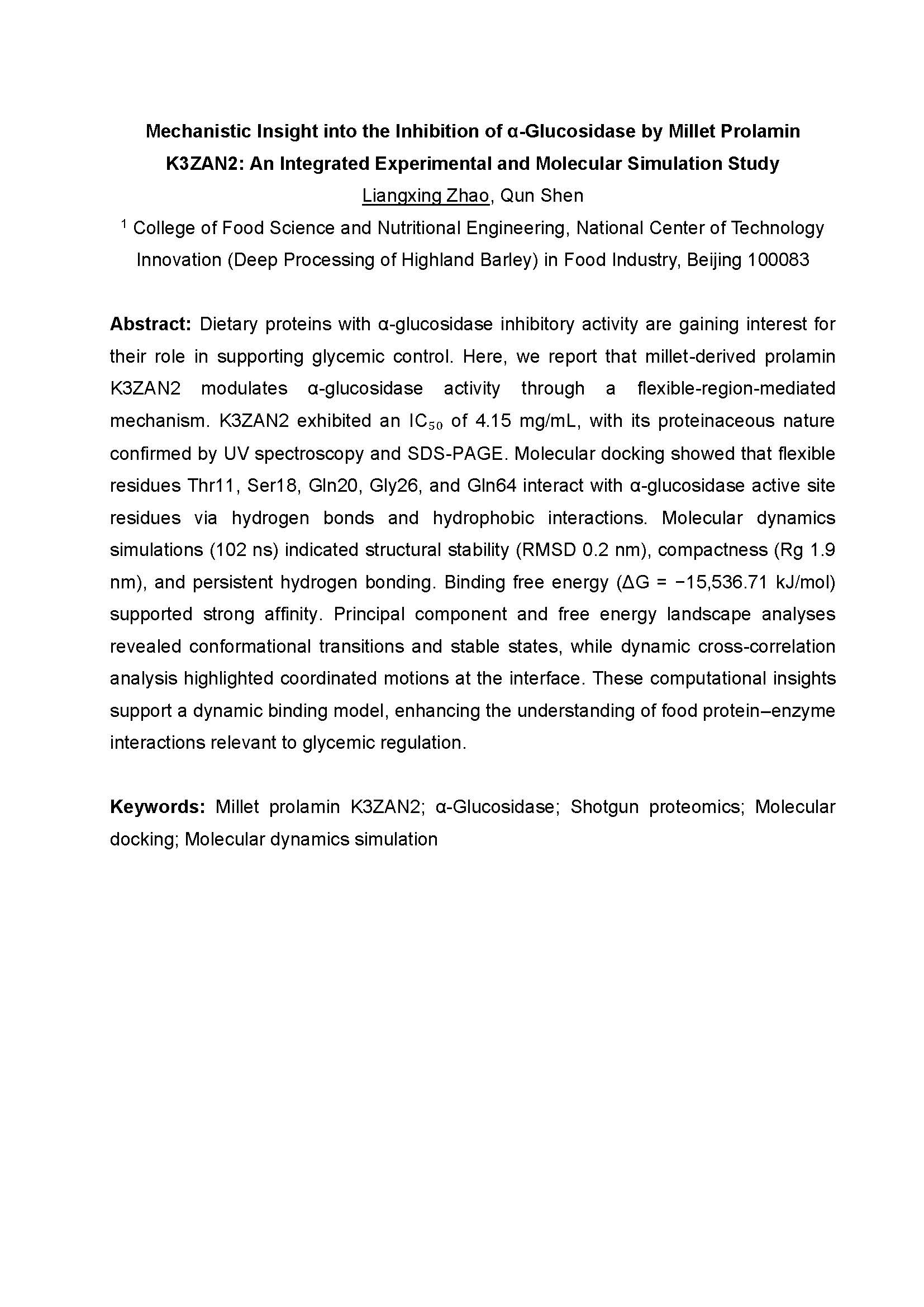Abstract: Dietary proteins with α-glucosidase inhibitory activity are gaining interest for their role in supporting glycemic control. Here, we report that millet-derived prolamin K3ZAN2 modulates α-glucosidase activity through a flexible-region-mediated mechanism. K3ZAN2 exhibited an IC₅₀ of 4.15 mg/mL, with its proteinaceous nature confirmed by UV spectroscopy and SDS-PAGE. Molecular docking showed that flexible residues Thr11, Ser18, Gln20, Gly26, and Gln64 interact with α-glucosidase active site residues via hydrogen bonds and hydrophobic interactions. Molecular dynamics simulations (102 ns) indicated structural stability (RMSD 0.2 nm), compactness (Rg 1.9 nm), and persistent hydrogen bonding. Binding free energy (ΔG = −15,536.71 kJ/mol) supported strong affinity. Principal component and free energy landscape analyses revealed conformational transitions and stable states, while dynamic cross-correlation analysis highlighted coordinated motions at the interface. These computational insights support a dynamic binding model, enhancing the understanding of food protein–enzyme interactions relevant to glycemic regulation.
Keywords: Millet prolamin K3ZAN2; α-Glucosidase; Shotgun proteomics; Molecular docking; Molecular dynamics simulation
